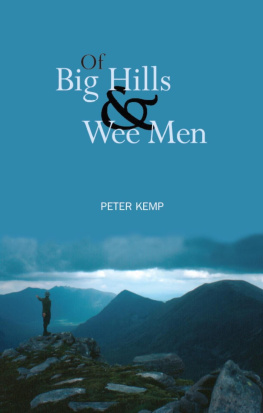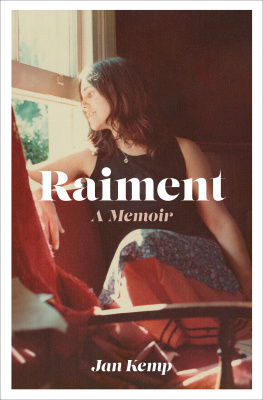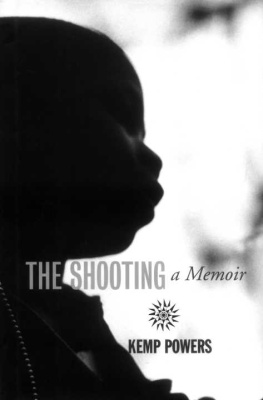Northern Trader
the last days of the fur trade
H. S. M. Kemp
New Edition

2014 Estate of H. S. M. Kemp.
All rights reserved. No part of this work covered by the copyrights hereon may be reproduced or used in any form or by any means graphic, electronic, or mechanical without the prior written permission of the publisher. Any request for photocopying, recording, taping or placement in information storage and retrieval systems of any sort shall be directed in writing to Access Copyright.
First published 1956 .
Printed and bound in Canada at Friesens.
The text of this book is printed on % post-consumer recycled paper with earth-friendly vegetable-based inks.
Cover design: Duncan Campbell, University of Regina Press.
Editor for the Press: David McLennan, University of Regina Press.
Text Design: John van der Woude Designs.
All photos in this volume, including cover images, are from the Harold Kemp Collection.
Library and Archives Canada Cataloguing in Publication
Kemp, H. S. M. (Harold Stuart Miller), 1892 - 1982 , author
Northern trader : the last days of the fur trade / H.S.M. Kemp. -- New edition.
Reprint of: Northern trader / H.S.M. Kemp. -- Toronto : Ryerson Press, 1956 .
Issued in print and electronic formats.
isbn -- 88977 -- (pbk.).-- isbn -- 88977 -- (pdf).-
isbn -- 88977 -- (html)
. Kemp, H. S. M. (Harold Stuart Miller), 1892 -.. Fur traders--Saskatchewan--Biography.. Fur trade--Saskatchewan.. Saskatchewan--Social life and customs. I. Title.
FC 3522 ..KA 2014 . 02092 C 2014 - 906061 - C 2014 - 906062
University of Regina Press, University of Regina
Regina, Saskatchewan, Canada, SS A
tel: () - 4758 fax: () - 4699
web: www.uofrpress.ca
The University of Regina Press acknowledges the support of the Creative Industry Growth and Sustainability program, made possible through funding provided to the Saskatchewan Arts Board by the Government of Saskatchewan through the Ministry of Parks, Culture, and Sport. We also acknowledge the financial support of the Government of Canada through the Canada Book Fund and the support of the Canada Council for the Arts for our publishing program.

To Elsie
Contents
Publishers Preface
The re-publication of Northern Trader in this handsome edition has been brought about by the dedicated efforts of a number of people. The enterprise began in 2010 , when Graham Guest, Archival Historian with Northern Saskatchewan Archives in La Ronge, answering a desire hed felt since first reading it years ago, determined to bring this classic book back into print, illustrated with photographs taken by Harold Kemp during his fur-trading years, images that had been preserved by his son Everett. Everett, who died in 2011 , had been living with his son, Trevor, who became guardian of the remarkable collection. Harolds only surviving child, Betty Decker, enthusiastically supported the books revival and has represented the family in negotiating a publication agreement. Alison Scanlon, Everett Kemps daughter, has given her unstinting support and provided a most helpful review of the photographs selected for the book. Thanks are also owed to Deb Greening, a personal friend of Everett, and Lois Dalby, who in the 1970 s asked Harold for copies of some of his photographs and later donated them to Northern Saskatchewan Archives. More recently, Doug Chisholm has scanned more of the photographs and arranged permission for the Archives to also make copies. There are still people living in Stanley Mission who remember Harold and Elsie Kemp and were able to identify individuals in the pictures he took there; Joe and Mary Roberts were especially helpful in this research in Stanley. Robert Cockburn, of the University of New Brunswick, provided valuable support throughout the project and contributed the Foreword. Les Oystryks knowledge of the history of Northern Saskatchewan, and the fur trade, has been an invaluable asset to the entire undertaking, and he coordinated arrangements with David McLennan, Editor of University of Regina Press. Everyone involved in the project is indebted to David, who recognised the literary and historical qualities of Northern Trader and has overseen its publication in this new, illustrated edition.
Foreword to the 2014 Edition
During my school day in the early years of the present century, the fur trade stories of R. M. Ballantyne, an ex- hbc clerk, were at the height of their popularity. Certainly I read them avidly, for who could fail to be thrilled with the romance of the fur trade? I was thus in a receptive mood to the merest suggestion that I should become a fur trader.
J. W. Anderson, Fur Traders Story ( 1961 )
To most twenty-first-century Canadians, the phrase the romance of the fur trade will seem to be not simply an anachronism, but a contradiction in terms, an expression evoking not far northern romance, but instead convictions about the exploitation of both wild animals and native peoples by powerful fur-trading companies and the men who served them. Our thinking having been shaped by the revisionist impulses of the last forty years, we now tend to judge previous generations harshly because they did not share the progressive values deemed mandatory in 2014 . Those holding this attitude toward the dead of earlier generations would do well to recall this sentence of L. P. Hartleys: The past is a foreign country; they do things differently there. This famous assertion is unquestionably true. Had the reader been, like Harold Kemp, sixteen years old in Saskatchewan early in the twentieth century and, like him, of adventurous temperament and an avid reader of Ballantyne, James Fenimore Cooper, and Stewart Edward White, he almost certainly would have believed the North to be, as Kemp did, a land of wonder and romance, a vast region of infinite allure in which a young man could test his character, make his name, and earn a living far distant from the mundane familiarities of town or city.
H. S. M. Kemp, born in Tunbridge Wells, Kent, in 1892 , came out to Saskatchewan as a boy to join his father, a roving Anglican clergyman, and learned the groundwork of Cree one winter while working for a superintendent of Indian missions. By the time he sought employment with the Hudsons Bay Company at sixteen, he was fed-up with working in a bank. Here is Kemp recalling that day in 1908 when he was shown through the hbc warehouse in Prince Albert:
But it isnt until you climb the stairway to the floor above that the North and the fur trade come to life, take on substance, and become real. Here are old and rusted guns, boiling kettles and frying pans, dog harnesses, dog whips, and snowshoes. Hanging from rafters, out of reach of the mice, youll find tents and rabbitskin robes, caribou parkas and Hudsons Bay blankets. In one corner is a massive fur press, used periodically to bale fur for shipment; in another corner, an ornate and high-ended toboggan, its rawhide sides emblazoned with the crest of the Company. And over all, there is a tangy, woodsy smell the smell of the North itself.
Earlier, down below in the main office, Kemps eyes, and imagination, had been drawn to a map of Northern Saskatchewan. It is unlike the maps of a later day there are too many blank, unexplored areas on it, too many lakes half-drawn, too many rivers that terminate only in dotted lines. Writing nearly half a century afterward, he still found the memory of it stimulating. That map and all it evokes of a foreign country is of course utterly remote from the experience and imagination of todays sixteen-year-old boy, thumbing his cellphone or peering, transfixed, at his computer screen. Kemp, some of us might unhesitatingly say, was fortunate to have been young in 1908 ; and we are fortunate that he was to compose a northern book of enduring merit, the most intimately personal and vividly expressed memoir we have of the last decades of the traditional fur trade south of the treeline.
















